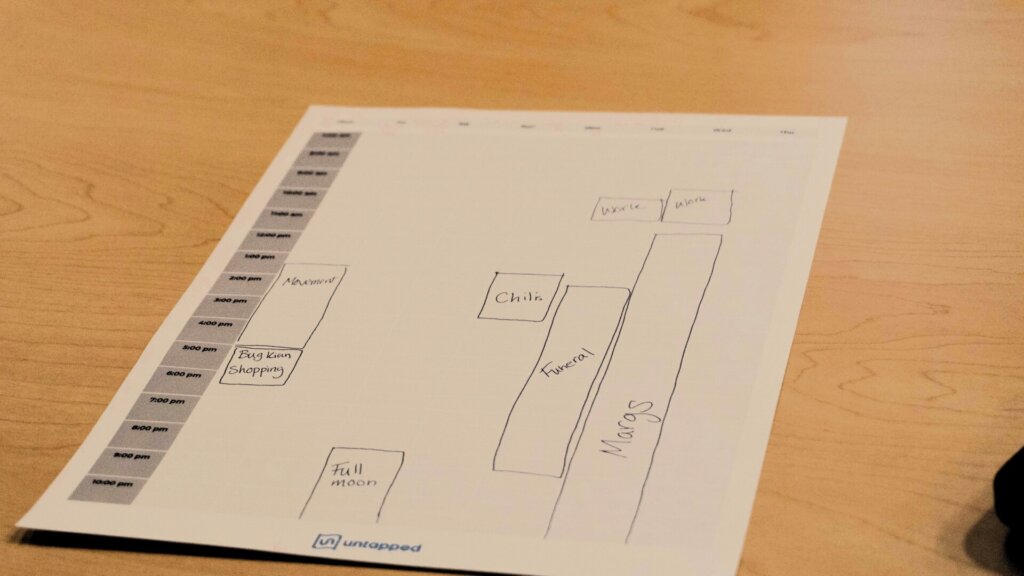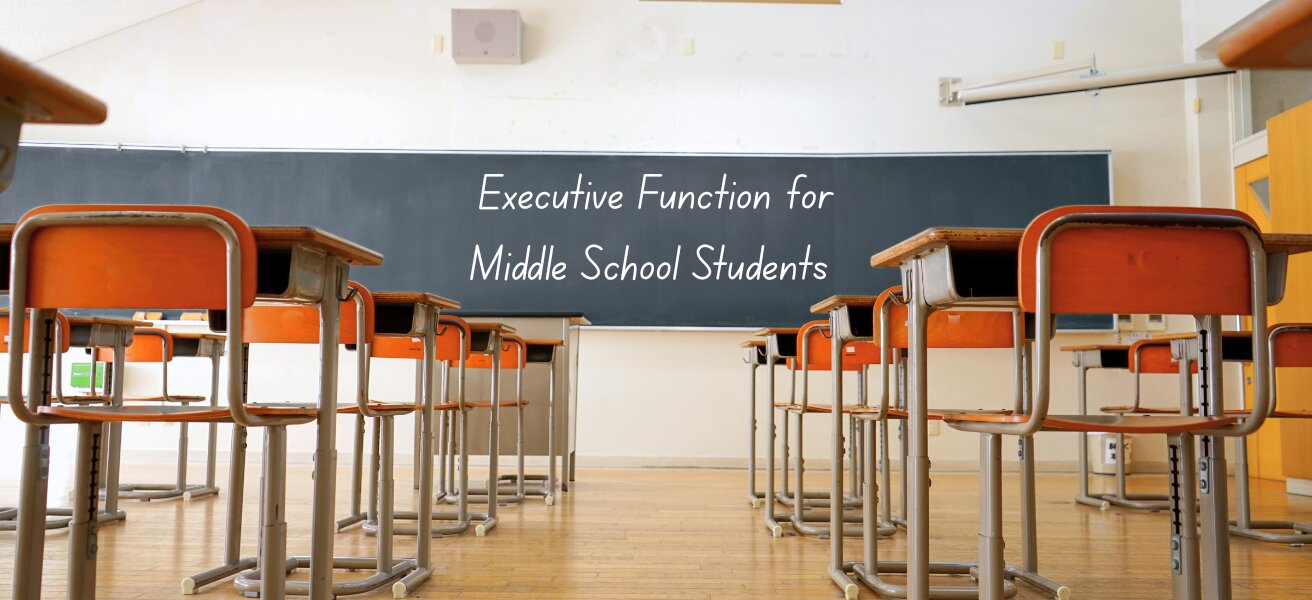The middle school years are a critical time for developing the mental skills needed for success in school and in life. These skills, known as executive functions, are the brain’s management system, helping us plan, organize, manage time, and stay focused. When teachers and parents work together to teach and reinforce these abilities, they provide a powerful support system that helps students navigate increasing academic demands with confidence. This guide offers practical executive functioning lessons for middle school that can be implemented both in the classroom and at home, fostering a consistent approach to building these crucial life skills.
1. Breaking Down Tasks: From Overwhelming to Achievable

Big projects can feel paralyzing to a middle schooler. The skill of breaking down large assignments into smaller, manageable steps is a fundamental lesson to reduce anxiety and procrastination.
For Teachers:
- The “Sticky Note” Method: For any long-term project, have students brainstorm every possible step, writing each on a separate sticky note. They can then physically arrange the notes in chronological order, creating a visual roadmap. This is one of the most foundational executive functioning lessons for middle school.
- Model “Think-Alouds”: When introducing a multi-step assignment, walk students through your own thinking process for how you would break it down. This verbal modeling makes the strategy concrete.
For Parents:
- Use Household Analogies: Show how breaking down tasks applies to everyday life. Planning a meal, for instance, involves choosing a recipe, listing ingredients, shopping, and following cooking steps. This reinforces that this is a life skill, not just a school skill.
- Check In on “Chunking”: When your child mentions a big project, ask questions that encourage them to break it down. For example, “What’s the very first thing you need to do for that research paper?” or “Let’s list the first three steps together.”
Bridging the Gap: School-Home Collaboration
Teachers can send a brief email to parents at the start of a major project, outlining the suggested “chunks” or mini-deadlines. Parents can then use this same language at home to support the student’s planning process, creating a consistent and reinforcing message.
2. Finding Their Voice: The Skill of Self-Advocacy

Self-advocacy involves students recognizing when they need help and confidently communicating that need. This empowers them to take ownership of their learning.
For Teachers:
- Scenario Role-Playing: Use class time to have students practice common scenarios, like asking for clarification on an assignment. Provide sentence starters like, “I’m having trouble with…, could you explain it another way?” These are key executive functioning lessons for middle school that build confidence.
- Create Discreet Signals: Work with students to develop non-verbal cues they can use to indicate they are struggling without having to speak up in front of the whole class.
For Parents:
- Brainstorm and “Script”: If your child is reluctant to approach a teacher, help them brainstorm what to say. You can even help them draft an email, but let them be the one to send it. The goal is to build their independence.
- Praise the Effort: Acknowledge and applaud your child when you see them taking steps to advocate for themselves. This positive reinforcement builds the confidence needed for this skill to grow.
Bridging the Gap: School-Home Collaboration
Open communication is key. Teachers can let parents know they are actively teaching self-advocacy. Parents can, in turn, notify the teacher if their child is struggling with a particular issue but is nervous to speak up, creating an opportunity for the teacher to initiate a supportive conversation.
3. Taming the Chaos: Digital and Physical Organization
An organized environment reduces distractions and the mental energy needed to find things, allowing for greater focus on learning.
For Teachers:
- Schedule “Reset” Time: Build in a few minutes at the end of class for students to organize their binders and check their planners. Making this a routine is a core component of effective executive functioning lessons for middle school.
- Teach Digital Filing: Model how to create a simple folder system on their computer for each class and use a consistent naming convention for files (e.g., “Subject_LastName_Assignment”).
For Parents:
- Create a “Launch Pad”: Designate a specific spot near the door for everything that needs to go to school: backpack, sports equipment, etc. Encourage packing it the night before to reduce morning stress.
- Let Them Choose: While you can provide guidance, allow your teen to have a say in their organizational system. They are more likely to use a planner or app if they have chosen it themselves.
Bridging the Gap: School-Home Collaboration
Teachers can suggest a simple, color-coded folder system at the beginning of the year. Parents can then help their child purchase and set up these same colored folders, creating a seamless organizational system between home and school.
4. The Brain Boost: The Power of Movement and Sleep
Executive functions are heavily influenced by physical well-being. Both movement and sleep are critical for attention, emotional regulation, and memory, making them a prerequisite for the success of other executive functioning lessons for middle school.
For Teachers:
- Incorporate “Brain Breaks”: Plan for short, 1-3 minute movement breaks between activities. This could be stretching, walking around the room, or a quick, active game.
- Use Active Learning: Get students moving with activities like “gallery walks” where they move between stations or debates that require them to move to different sides of the room.
For Parents:
- Protect Sleep Time: Help your middle schooler understand the importance of a consistent sleep schedule. The adolescent brain needs adequate sleep to function effectively and absorb new learning.
- Encourage Physical Activity: Ensure your child has opportunities for physical activity after school. This helps them de-stress and refocus for homework.
Bridging the Gap: School-Home Collaboration
If a teacher notices a student is consistently lethargic, a quick, supportive call to the parent can open a dialogue. Together, they can explore if sleep schedules or other factors might be at play and work toward a solution.
5. Mastering Time: Backward Planning and Time Blocking

Learning to see time, plan for the future, and use the present moment wisely are advanced executive functioning lessons for middle school that pay dividends for a lifetime.
For Teachers:
- Whole-Class Backward Planning: For a long-term project, start with the final due date on a large calendar. As a class, work backward, setting deadlines for each smaller step (outline, research, draft, etc.).
- Introduce Time-Estimation: Before an in-class assignment, ask students to estimate how long they think it will take them. Afterward, have them reflect on whether their estimate was accurate. This builds time awareness.
For Parents:
- The Family Calendar: Use a large, visible family calendar to track everyone’s schedules. This models planning and helps your middle schooler see how their own deadlines and activities fit into the bigger picture.
- Co-Create a Weekly Plan: Sit down with your child each week to review their upcoming assignments. Guide them in blocking out time for homework, studying, and free time. Acting as their partner offers support while building their planning skills.
Bridging the Gap: School-Home Collaboration
When a long-term project is assigned, teachers can provide a simple template for a backward plan. They can encourage students to take it home and fill it out with their parents. This not only keeps parents informed but actively involves them in a crucial executive functioning lesson.
Explore our student coaching and teacher training programs at Untapped Learning to build the executive function skills that create lasting success.





